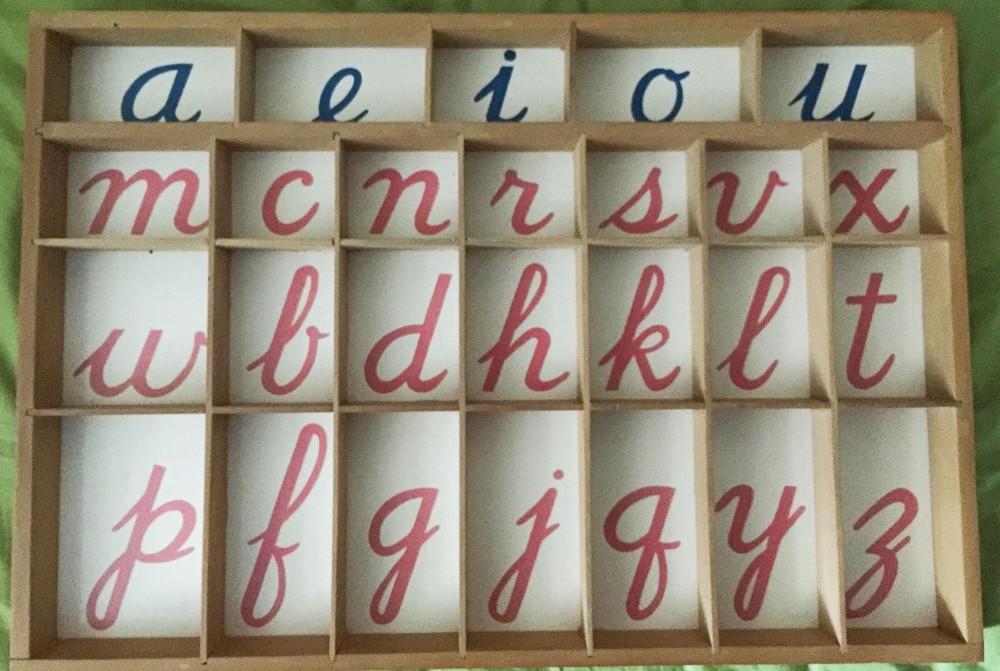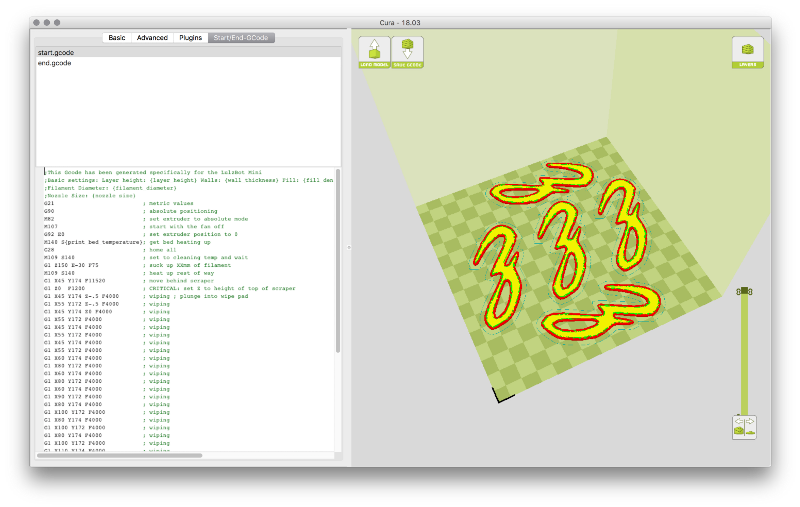 Danish expat, Washington, D.C.-area resident, and maker Mathias Hansen put his many tech-related skills to work in the interest of making learning the alphabet more fun for young Montessori school students. Montessori schools are all about hands-on learning. Hansen, an accomplished software engineer at VideoBlocks, an online company that provides creative content–graphics, video, and audio–at affordable prices, recently fielded a question about how to revitalize an old hands-on alphabet set. Hansen recalled the initial engagement:
Danish expat, Washington, D.C.-area resident, and maker Mathias Hansen put his many tech-related skills to work in the interest of making learning the alphabet more fun for young Montessori school students. Montessori schools are all about hands-on learning. Hansen, an accomplished software engineer at VideoBlocks, an online company that provides creative content–graphics, video, and audio–at affordable prices, recently fielded a question about how to revitalize an old hands-on alphabet set. Hansen recalled the initial engagement:
“I got an interesting question from a Montessori school recently. They had this material that consisted of a big box with a slot for each letter in the alphabet. Unfortunately many of the letters had gone missing over time, and they now no longer had the complete alphabet.”
It probably goes without saying that it’s pretty hard to make much with your ABCs if you have an incomplete set. Hansen suggested in response to the query that 3D printing would provide a quick and “relatively simple” solution to the problem of the missing letters. He found out later that, indeed, it was a simple enough solution although somewhat time consuming in the end.
Hansen began the project by taking a picture of the wooden alphabet box using his phone camera. The shape of each letter was already painted on the alphabet box, so Hansen decided to use the preexisting letter shapes to create his 3D models.
After creating the individual letters, Hansen used Photoshop to “slice out each letter” individually. He noted that while he used Photoshop for this part of the process, “Gimp or other image editing software should work just as well.” Working in Photoshop, he created a separate file for each letter of the alphabet, removing the background and rendering the foreground in black to simplify things.
With the letters “completely rasterized”–that is, converted to pixels on a grid–Hansen moved on to create vector versions of the letters so that they could be converted to 3D objects or models. The problem was that he didn’t know much about drawing vector shapes and, furthermore, wanted to be able to “automate the whole process” from that point forward.
“Luckily,” he explained, “I found an amazing open source project called “potrace” that did just that. A quick “brew install potrace” later, I was able to move on.”
 A self-proclaimed fan of OpenSCAD, Hansen planned to import his vectorized images and then extrude each one to a thickness of 2mm. As it turns out, Hansen discovered, “you can invoke OpenSCAD from the command line and have it render to .stl without opening the GUI.” While it took some refining–see Hansen’s full description of the project on Medium–he arrived at the stage where he was ready to lay out his 3D models of each letter in the alphabet for printing.
A self-proclaimed fan of OpenSCAD, Hansen planned to import his vectorized images and then extrude each one to a thickness of 2mm. As it turns out, Hansen discovered, “you can invoke OpenSCAD from the command line and have it render to .stl without opening the GUI.” While it took some refining–see Hansen’s full description of the project on Medium–he arrived at the stage where he was ready to lay out his 3D models of each letter in the alphabet for printing.
In the interest of making the most of his material, Hansen used Cura to manually lay out the models so he could fit as many as possible into a single print job. He used his Lulzbot Mini 3D printer and OctoPrint to manage the approximately 35 print jobs, each of which took around 20 to 60 minutes. If it sounds time-consuming, it was, but Hansen managed it well.
“So, all I had to do was remove the printed parts from the build plate and then kick off the next one, but obviously 3D printing is not ideal for ‘mass manufacturing,’” he said.
That said, as his project demonstrates, large-batch (relatively speaking) projects like this one are completely manageable and are probably desirable if the project isn’t ongoing.
The final result is pretty impressive. Hansen concluded:
“It sure wasn’t the fastest or most practical way to solve the problem, but it was super fun working on automating the process and seeing the final product. The school was certainly also excited about getting their letters back.”
What do you think of these innovative letters? Discuss in the 3D Printed Alphabet forum over at 3DPB.com.
Subscribe to Our Email Newsletter
Stay up-to-date on all the latest news from the 3D printing industry and receive information and offers from third party vendors.
Print Services
Upload your 3D Models and get them printed quickly and efficiently.
You May Also Like
Reinventing Reindustrialization: Why NAVWAR Project Manager Spencer Koroly Invented a Made-in-America 3D Printer
It has become virtually impossible to regularly follow additive manufacturing (AM) industry news and not stumble across the term “defense industrial base” (DIB), a concept encompassing all the many diverse...
Inside The Barnes Global Advisors’ Vision for a Stronger AM Ecosystem
As additive manufacturing (AM) continues to revolutionize the industrial landscape, Pittsburgh-based consultancy The Barnes Global Advisors (TBGA) is helping shape what that future looks like. As the largest independent AM...
Ruggedized: How USMC Innovation Officer Matt Pine Navigates 3D Printing in the Military
Disclaimer: Matt Pine’s views are not the views of the Department of Defense nor the U.S. Marine Corps Throughout this decade thus far, the military’s adoption of additive manufacturing (AM)...
U.S. Congress Calls Out 3D Printing in Proposal for Commercial Reserve Manufacturing Network
Last week, the U.S. House of Representatives’ Appropriations Committee moved the FY 2026 defense bill forward to the House floor. Included in the legislation is a $131 million proposal for...


































